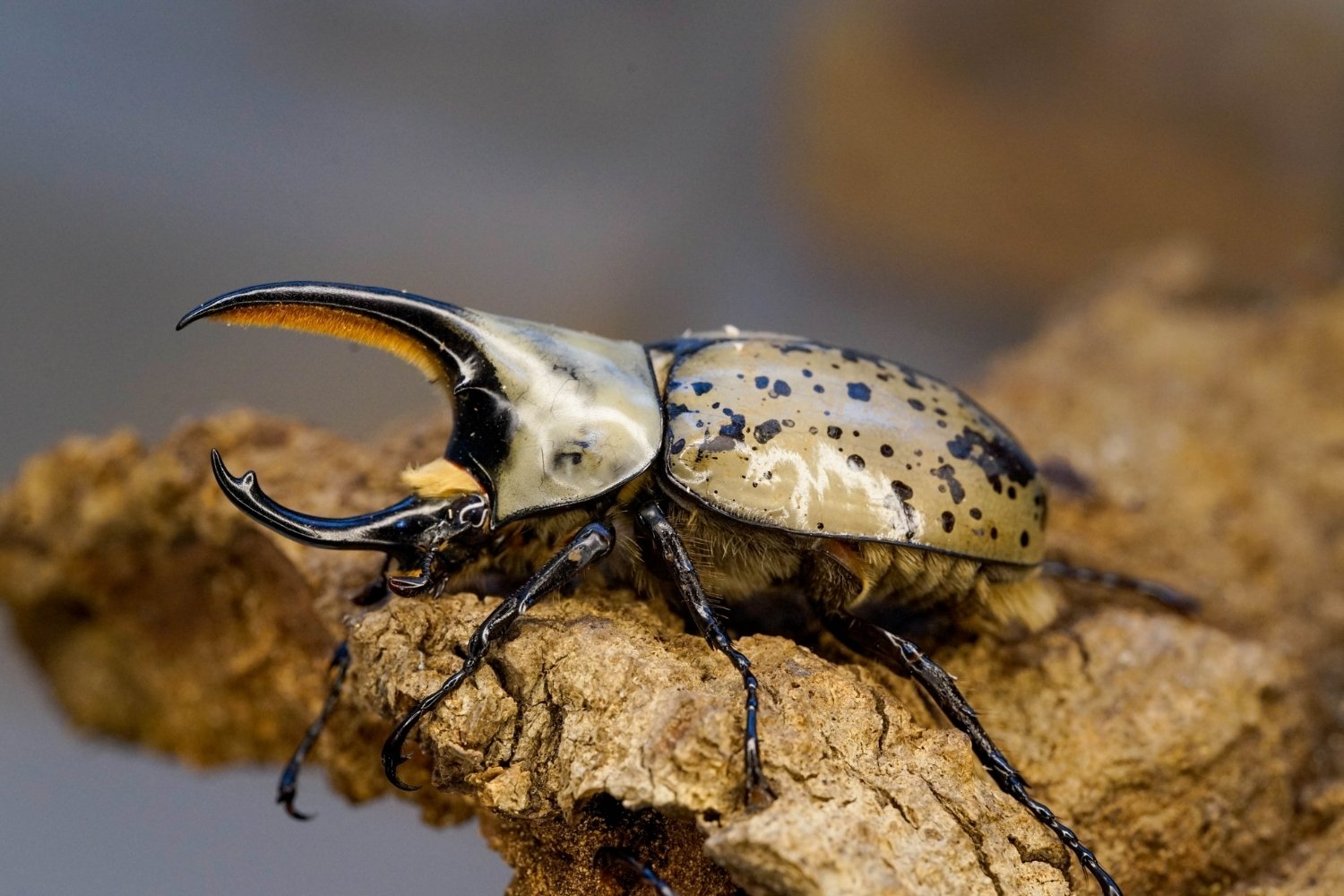
Did you know the Hercules beetle is one of the strongest creatures on Earth? This incredible insect can lift objects up to 850 times its body weight! Found mainly in Central and South America, these beetles are famous for their impressive size and strength. Male Hercules beetles sport long, horn-like pincers used in battles over mates. Despite their fierce appearance, they are harmless to humans. Their diet consists mainly of rotting wood and fruit. These beetles undergo a fascinating transformation from larvae to adults, a process that can take up to two years. Curious about more amazing facts? Keep reading to uncover the wonders of the Hercules beetle!
Meet the Hercules Beetle
The Hercules beetle, known for its impressive size and strength, is a fascinating creature. Found primarily in the rainforests of Central and South America, this beetle has captured the interest of scientists and bug enthusiasts alike. Let's dive into some intriguing facts about this mighty insect.
-
The Hercules beetle belongs to the Dynastinae subfamily, which is part of the scarab beetle family.
-
These beetles are named after Hercules, the mythological Greek hero known for his incredible strength.
-
Male Hercules beetles can grow up to 7 inches long, making them one of the largest beetles in the world.
-
The males have a distinctive horn on their head, which they use to fight other males for territory and mates.
-
Female Hercules beetles lack the long horn and are generally smaller than the males.
Strength and Abilities
The Hercules beetle is not just large; it is also incredibly strong. Its abilities are a testament to the wonders of nature.
-
Hercules beetles can lift objects that are 850 times their own body weight.
-
Their strength is primarily used during mating battles, where males wrestle each other using their horns.
-
Despite their size and strength, Hercules beetles are not aggressive towards humans.
-
They have powerful mandibles that can chew through tough plant material.
-
These beetles can fly, although their large size makes them somewhat clumsy in the air.
Life Cycle and Habitat
Understanding the life cycle and habitat of the Hercules beetle provides insight into its survival and adaptation strategies.
-
The life cycle of a Hercules beetle includes four stages: egg, larva, pupa, and adult.
-
The larval stage can last up to two years, during which the larvae feed on decaying wood.
-
Adult Hercules beetles live for about three to six months.
-
These beetles are primarily nocturnal, meaning they are most active at night.
-
Hercules beetles are found in tropical rainforests, where they have plenty of decaying wood to feed on.
Unique Features
The Hercules beetle has several unique features that set it apart from other insects.
-
The color of a Hercules beetle can change depending on the humidity. In dry conditions, they appear olive-green, while in humid conditions, they turn black.
-
The horn of the male Hercules beetle is covered in fine hairs that help it sense its environment.
-
These beetles have a unique way of communicating through vibrations and sounds produced by rubbing their body parts together.
-
The exoskeleton of the Hercules beetle is incredibly tough, providing protection against predators.
-
Despite their tough exterior, they are preyed upon by birds, mammals, and reptiles.
Conservation and Human Interaction
The relationship between Hercules beetles and humans is complex, involving both admiration and exploitation.
-
Hercules beetles are often collected and sold as pets due to their impressive size and appearance.
-
In some cultures, they are considered symbols of strength and power.
-
Habitat destruction poses a significant threat to Hercules beetle populations.
-
Conservation efforts are underway to protect their natural habitats and ensure their survival.
-
Researchers study Hercules beetles to understand more about insect physiology and biomechanics.
-
The beetles play a crucial role in their ecosystem by helping decompose dead wood and recycle nutrients.
-
Despite their fearsome appearance, Hercules beetles are harmless to humans and play a vital role in maintaining the health of their rainforest habitats.
The Mighty Hercules Beetle
The Hercules beetle is truly a marvel of nature. With its impressive size, unique horn, and incredible strength, it stands out in the insect world. Found mostly in the rainforests of Central and South America, this beetle plays a crucial role in its ecosystem by helping decompose dead wood and recycle nutrients. Its fascinating life cycle, from egg to larva to adult, showcases the wonders of metamorphosis.
Despite its fearsome appearance, the Hercules beetle is harmless to humans. Its primary battles are with other beetles, often over food or mates. These beetles can lift objects 850 times their body weight, making them one of the strongest creatures relative to their size.
Understanding and appreciating the Hercules beetle reminds us of the incredible diversity and complexity of life on Earth. Next time you see a beetle, think about the hidden strength and beauty it might possess.
Was this page helpful?
Our commitment to delivering trustworthy and engaging content is at the heart of what we do. Each fact on our site is contributed by real users like you, bringing a wealth of diverse insights and information. To ensure the highest standards of accuracy and reliability, our dedicated editors meticulously review each submission. This process guarantees that the facts we share are not only fascinating but also credible. Trust in our commitment to quality and authenticity as you explore and learn with us.
